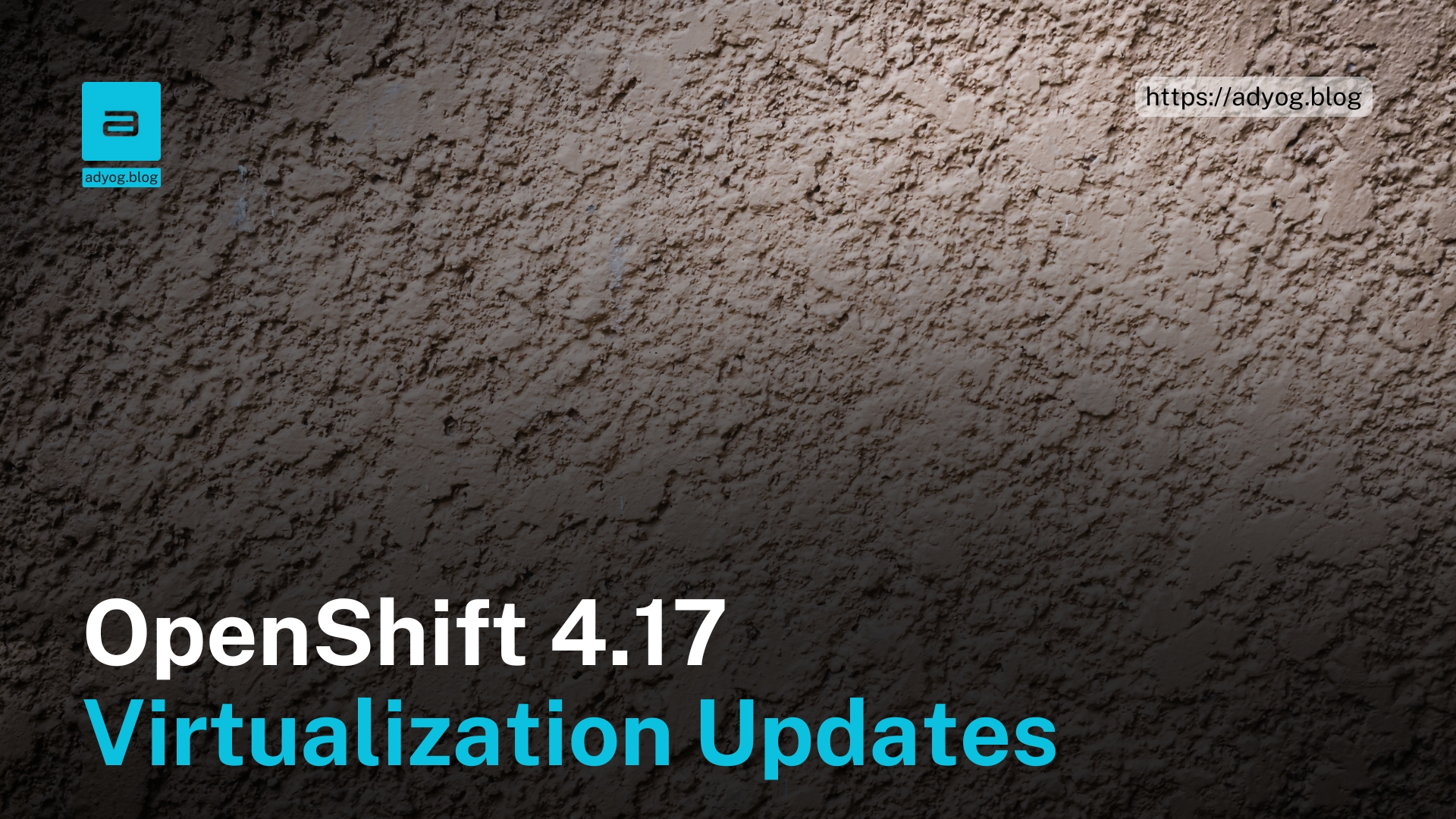OpenShift 4.17 introduces groundbreaking virtualization updates that streamline cloud-native workload management. With features like memory overcommit, memory hot-plugging, automatic workload balancing, and storage live migration, OpenShift empowers enterprises to optimize resource usage and scale their infrastructure seamlessly. In this article, we explore how these updates enhance virtualization capabilities and benefit modern enterprise environments.
New Features in OpenShift 4.17
1. Memory Overcommit
Memory overcommit enables virtual machines (VMs) to share unused memory resources dynamically, optimizing resource utilization and reducing costs. By allocating more memory than physically available, administrators can consolidate workloads without impacting performance during periods of low demand.
Risks and Mitigations
- Out-of-Memory (OOM) Risks: While memory overcommit can save costs, it carries the risk of OOM situations when memory demands exceed available physical memory.
- Mitigation Strategies in OpenShift 4.17:
- Resource Quotas: OpenShift enforces resource quotas to ensure that workloads stay within defined limits, minimizing OOM scenarios.
- Monitoring and Alerts: Built-in monitoring tools track memory usage, triggering alerts when thresholds are approached.
- Predictive Algorithms: OpenShift uses Kubernetes’ scheduling intelligence to anticipate memory spikes and preemptively allocate resources.
Role of Kubelet in Memory Management
Kubelet, the Kubernetes agent running on each node, plays a critical role in managing memory resources. It ensures:
- Graceful Eviction: Low-priority pods are terminated to free memory for critical workloads.
- Node Monitoring: Continuous tracking of node resource usage to prevent overload.
2. Memory Hot-Plugging
Memory hot-plugging allows real-time memory scaling for running VMs without requiring downtime. This feature is particularly valuable for applications with unpredictable memory requirements.
Use Cases
- Mission-Critical Applications: Ensures uninterrupted performance for enterprise applications.
- Dynamic Workloads: Ideal for scenarios where memory demands fluctuate during operation.
3. Automatic VM Workload Balancing with D-Schuler
D-Schuler in OpenShift 4.17 distributes workloads intelligently across nodes, preventing resource hotspots and ensuring optimal cluster performance.
How It Works
- Kubernetes Integration: Leverages Kubernetes concepts like pods and deployments to distribute workloads dynamically.
- Real-Time Adjustment: Continuously evaluates resource usage and redistributes workloads as needed.
Comparison with VMware DRS
While both OpenShift D-Schuler and VMware DRS aim to optimize resource allocation, their approaches differ:
- Architecture: OpenShift’s workload balancing is tightly integrated with Kubernetes’ container-first design, using pods and deployments as core units. In contrast, VMware DRS is tailored to virtual machines, providing advanced scheduling algorithms for specific hardware environments.
- Strengths: OpenShift excels in environments where containerized workloads coexist with VMs, while VMware DRS offers deeper hardware integration and advanced tuning options.
- Limitations of OpenShift:
- Less mature advanced scheduling algorithms compared to VMware.
- Limited support for hardware-specific optimizations.
4. Storage Live Migration (Tech Preview)
Storage live migration in OpenShift 4.17 enables the seamless transfer of VMs between storage backends without downtime.
Supported Storage Backends
- Tech Preview Compatibility: OpenShift supports Red Hat Ceph Storage and NFS in the current preview. Additional storage backends may be added in future releases.
Use Cases
- Maintenance: Move workloads during storage maintenance without impacting uptime.
- Disaster Recovery: Quickly migrate critical workloads to safe storage during unexpected failures.
- Data Center Consolidation: Reallocate resources as part of long-term infrastructure optimization.
Security Enhancements
OpenShift 4.17 also introduces several security updates related to virtualization:
- VM Isolation: Enhanced VM security through stricter isolation policies, minimizing cross-VM interference risks.
- Encrypted Data at Rest: Supports encryption for VM data stored on supported storage backends.
- Network Policies: Improved network isolation and granular controls for securing communication between VMs.
Benefits and Use Cases in Enterprise Workloads
The updates in OpenShift 4.17 deliver tangible benefits for enterprises:
- Cost Efficiency: Features like memory overcommit reduce infrastructure costs while maintaining performance.
- Improved Agility: Real-time memory scaling and workload balancing ensure rapid response to dynamic workload demands.
- Enhanced Security: Strengthened security measures safeguard sensitive enterprise workloads.
- Streamlined Operations: Features like storage live migration simplify infrastructure maintenance and disaster recovery.
Call to Action
OpenShift 4.17 offers a compelling suite of virtualization features that streamline operations and enhance workload efficiency. Ready to explore?
- Visit Red Hat’s OpenShift Documentation for detailed guides.
- Join the OpenShift Community to share experiences and learn from experts.
- Watch the Red Hat Live Stream for deep dives into OpenShift 4.17’s features.
Conclusion
OpenShift 4.17 represents a significant step forward in cloud-native virtualization, combining innovative features like memory overcommit, workload balancing, and storage live migration with enhanced security. These updates position OpenShift as a robust solution for enterprises seeking to optimize their virtualization strategy in hybrid and multi-cloud environments.
Explore More
- AI Services: Explore our AI services for more details.
- Digital Product Development: Discover our digital product development expertise.
- Design Innovation: Learn about our design innovation approach.





Leave a Reply